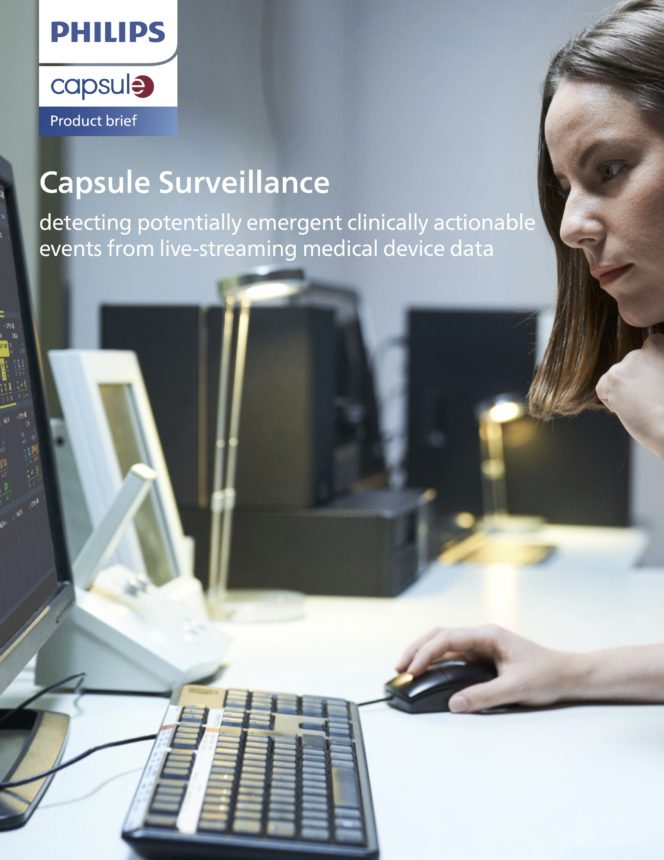Both patient monitoring and clinical surveillance are critical to overall care processes and patient care. There are numerous differences to note between patient monitoring and clinical surveillance. Conclusively, healthcare systems should continue to evaluate care processes to provide high-quality care for more diverse and high-acuity-level patient populations. The coordinated use of complementary monitoring and surveillance capabilities can provide an important foundation for improving the overall quality of patient care and patient safety.
RELATED READING: How Clinical Workflow and Early Detection Technologies Transform Patient Care
The Power Behind Patient Monitoring
Patient monitoring has become an increasingly important strategy for detecting changes in a patient’s cardiorespiratory status to ensure appropriate actions are taken by clinicians before those changes evolve into a serious event. In addition, clinicians review real-time and trended vital signs to evaluate patients and identify negative changes in their clinical condition, often before observing evidence of deterioration. Clinicians compare data obtained through monitoring with previously collected information. This evaluation facilitates recognition of potential complications and changes in clinical status. However, monitoring does not typically integrate the analytic and decision-making skills that are essential elements of nursing observations — highlighting the importance of clinical surveillance.[1]
The Effectiveness of Clinical Surveillance
In contrast to patient monitoring, continuous clinical surveillance integrates analytical capabilities to reveal insights that can be applied to ongoing patient care. More than a patient safety measure, clinical surveillance is a viable and sustainable solution for the negative costs associated with patient deterioration. In contrast to patient monitoring, which includes observation, measurement and recording of physiological parameters, continuous clinical surveillance is a systematic, goal-directed process that detects physiological changes in patients early, interprets the potential clinical implications of those changes and alerts clinicians so they can intervene rapidly and efficiently.[2]
Clinical surveillance allows clinicians to monitor patients in emergency and operating rooms, intensive care, and other healthcare settings. The system connects to a variety of medical devices, including ventilators, infusion pumps, and patient care monitors. Clinical surveillance combines data from all connected devices and other sources to identify patient developments and produce clinical alerts as needed. Beyond basic clinical surveillance, the Capsule Surveillance System links retrospective patient data from the EHR with patient vitals for early warning notifications leading to early interventions. Early intervention can help prevent rising acuity and severely compromised patient conditions. Additionally, the added layer of surveillance can help reduce burdens facing already overwhelmed clinicians. It is important to note, however, the distinct differences between patient monitoring and clinical surveillance.
Uncovering the Variances Between Monitoring and Surveillance
Patient monitoring and clinical surveillance each represent distinctions in patient care. Monitoring involves observation, measurement, and recording of physiological parameters, while surveillance is a systematic, goal-directed process based on early detection of signs of change, interpretation of potential clinical implications of such changes, and initiation of rapid, appropriate interventions.[3] Ultimately, surveillance is critically important in terms of process improvement and patient care. In one article on patient safety and nursing surveillance, this peer-reviewed source reported that the use of surveillance versus monitoring resulted in a mean reduction in rapid response deployment time of 291 minutes. Furthermore, by using surveillance, a reduction in median hospital length of stay by 4 days was demonstrated.[4]
RELATED READING: Continuous Patient Monitoring Can Boost Staff Efficiency and Reduce Risk in Non-Critical Care Settings
Capsule Surveillance and Clinical Communication
Early detection of a deteriorating patient condition may save lives. Patient monitoring is characterized by ongoing patient observation and assessment. By contrast, clinical surveillance uses the results of monitoring to recognize changes in the patient’s clinical status, interpret the potential clinical implications of these changes, and to help clinicians decide if further actions are required.
Hence, Capsule, with patient safety and the benefits of surveillance in mind, created the most advanced clinical surveillance solution for hospitals. A powerful blend of monitoring and clinical surveillance, medical device integration, and data analytics and notifications, the solution notifies clinicians about potential patient events. The Capsule Medical Device Information Platform, which includes the Capsule Surveillance System, enhances patient observation and is designed to help reduce patient risk.
About the author
John Zaleski, Ph.D., NREMT, CAP, CPHIMS is head of clinical informatics at Philips Capsule. He has authored multiple texts on medical device data and its use in clinical decision making. In addition, John Zaleski is an active pre-hospital clinician and volunteers as an emergency medical technician. He holds a Ph.D. from the University of Pennsylvania and is also the named inventor or co-inventor on 8 U.S. patents related to medical device technology.
Learn more about Philips Capsule Clinical Surveillance.
Download